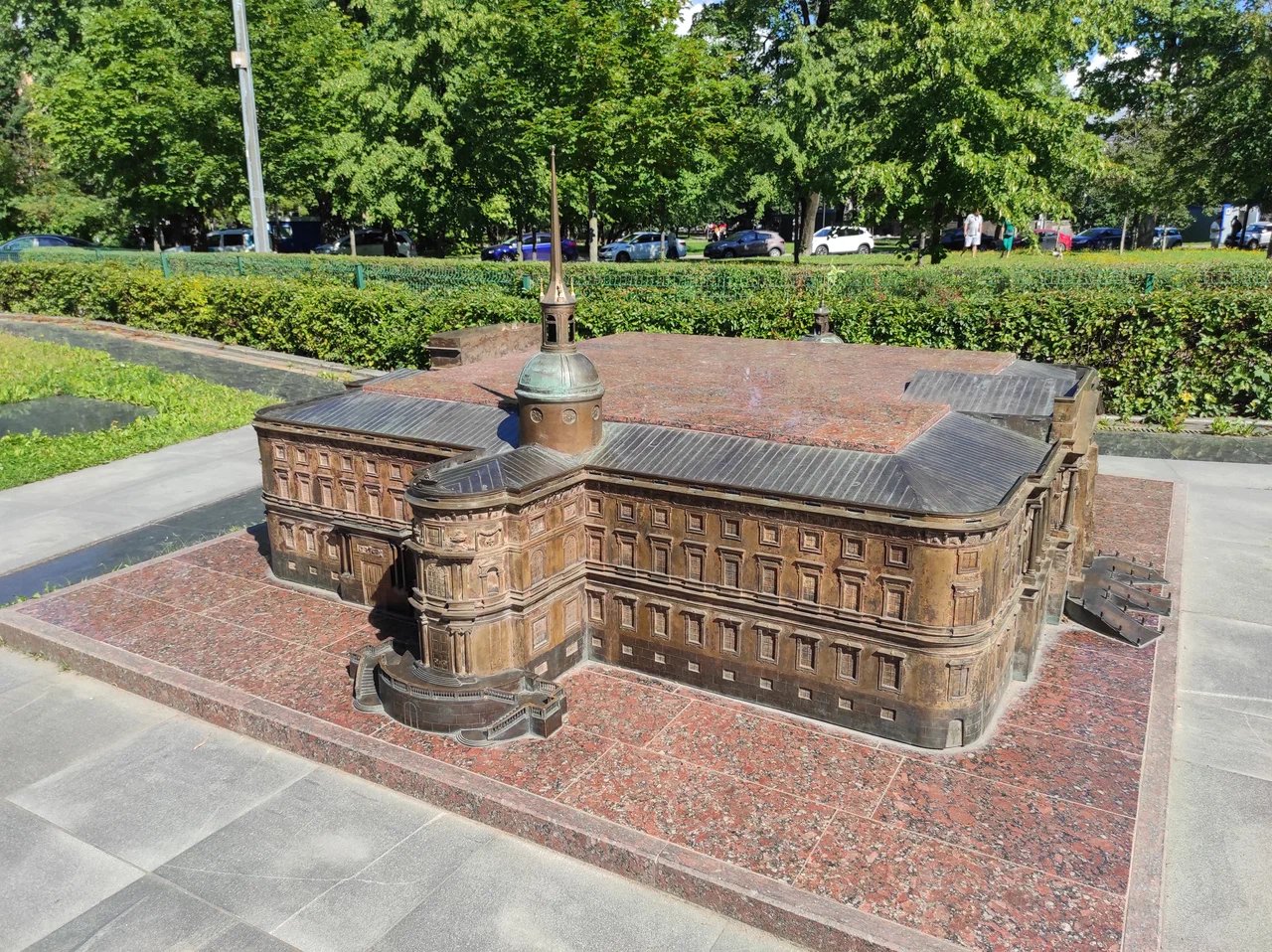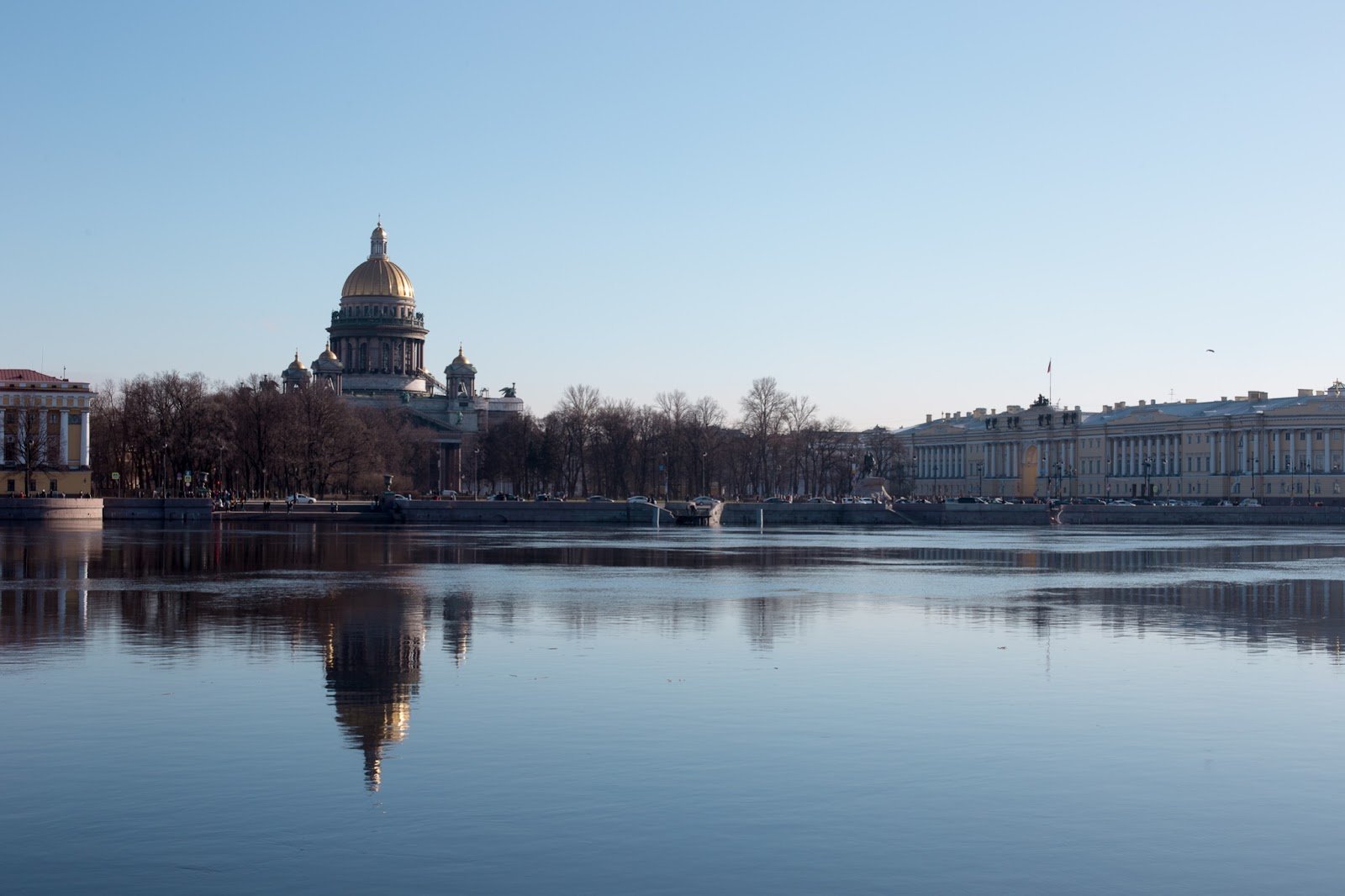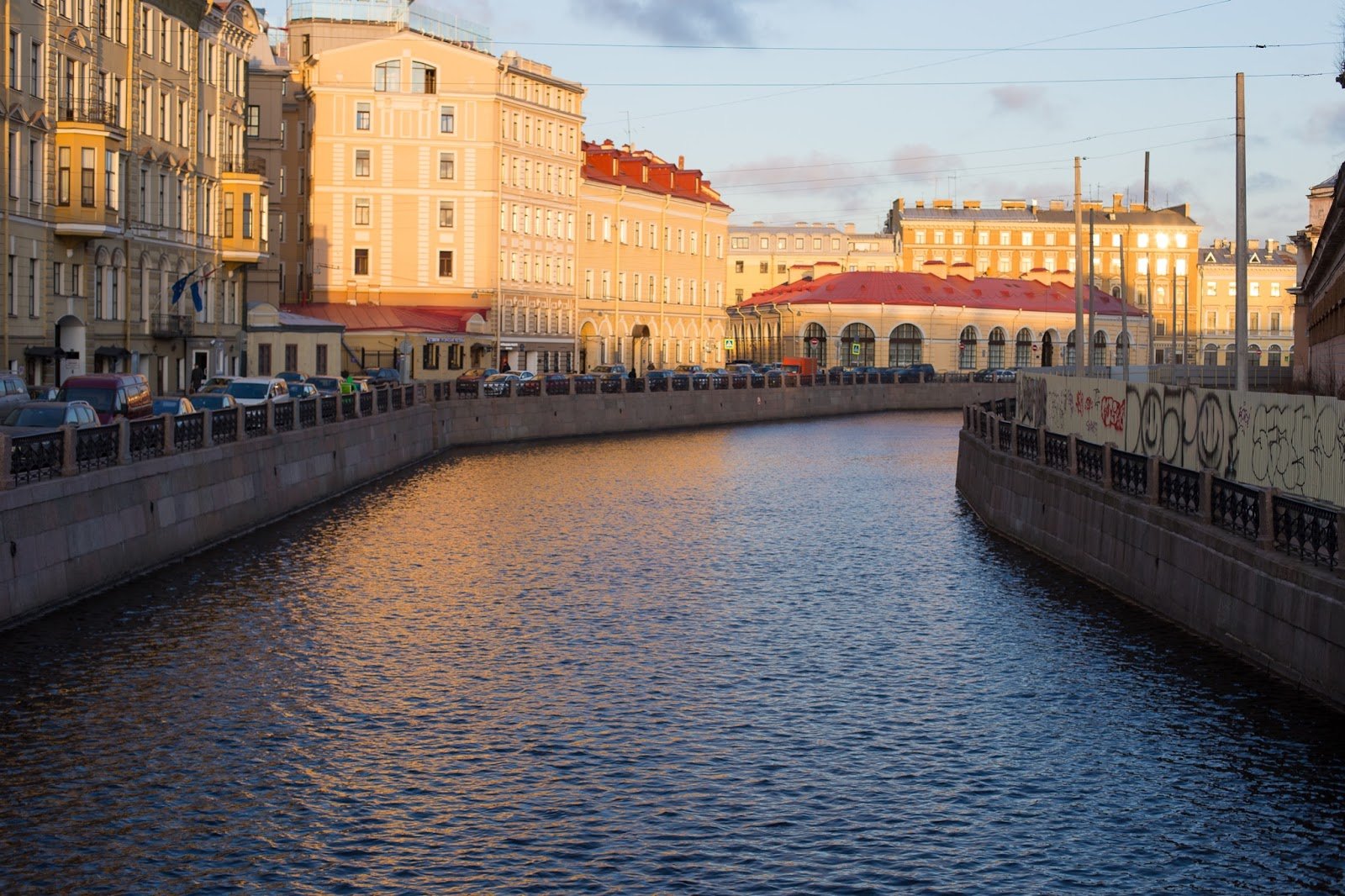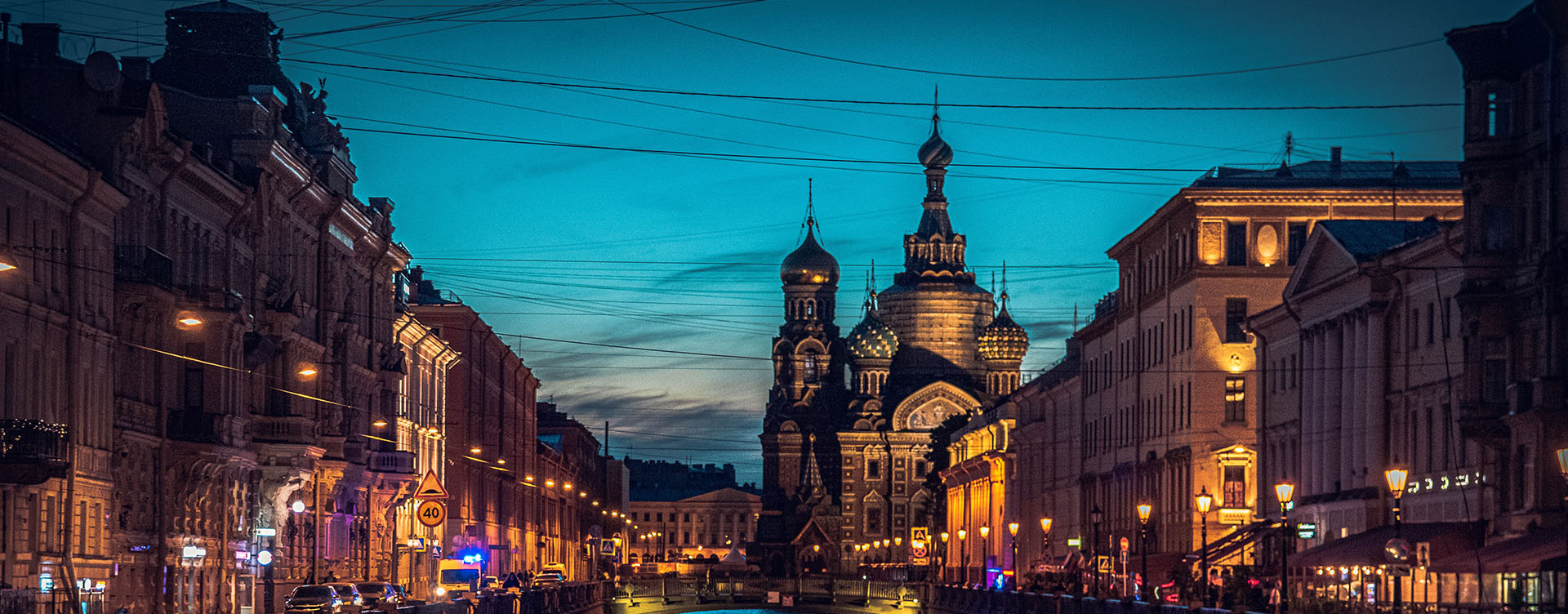Vladimir Vaskevich, sightless traveler, the host of As Far As Eyes Can’t See (Kuda Glaza Ne Glyadyat) travel show and a Special View correspondent, continues to inform us about the Russian cities which are most accessible for sightless tourists. In this article, you will learn about the most interesting sites of Russia’s Northern Capital.
Petrograd, Leningrad and St. Petersburg By Touch
The city will impress you from the moment you exit your plane or train. At this very minute you will feel the humid sea air, the slight breeze, and even the famous St. Pete’s rain if you’re lucky enough. Don’t get upset: absolutely everyone gets wet here, but such trivialities cannot dim your happiness inspired by the visit to this place. The most important secret is to come to St. Pete in clothing adequate to the weather.
Firstly, get acquainted with the city and its architectural image by touch. To do this, go to Alexander’s Garden. Since 2011 it hosts the unique St. Petersburg In Miniature tactile exhibition (5b, Alexandrovsky Park).
You need to exit Gorkovskaya metro station, turn left and walk a hundred meters into the Alexander’s Garden. Miniature copies of most prominent buildings, palaces and churches are presented on a small plot in the garden, and the paths between the models stand for St. Pete’s rivers and canals. One can easily feel them under the soles and understand the layout of the city’s most important waterways.
The models of the most popular tourist sites are presented in 1 to 33 scale including all the nuances, architectural features and artistic ornaments. Small copies of the Palace Square with the General Staff Building and the Winter Palace, Peter-and-Paul Fortress, St. Isaac’s and the Kazan Cathedrals, the Constitutional Court building, the Spit of Vasilyevsky Island, the Church of The Savior on Blood, Saint Michael’s Castle and the Admiralty Building can be found here.
If you happen to walk around this garden, ask someone to lead you to The Architects monument. This is a sculptural group showing the architects who created the Northern Capital’s most important sites. They are sitting around a huge table. Rastrelli, Thomas de Thomon, Voronikhin and Bazhenov are among the portrayed masters. If you walk along the perimeter of the table and examine the figures, you can find a vacant chair and join the distinguished company to take a picture. The sculpture of the Northern Capital’s patron saint, Saint Peter, is also nearby.

Audio description: a colored photo of St. Michael’s Castle (or the Engineers’ Castle) miniature model. The castle used to be the Emperor’s palace in the center of St. Petersburg. Its scaled-down copy of is mounted on a stone pedestal. It is a three-storied square building with rounded corners. The closed shape of the castle creates the impression of an impregnable medieval fortress. The association with a knight’s castle is supported by the gilded spire of St. Michael’s Church topped with the Maltese cross. The semi-rotunda of the church in the center of the facade has a semicircular protruding apse at the western part of the building, and this shape is symmetrically reflected at its opposite part.
All of these objects are available for tactile viewing, but the miniatures park itself is open from 11 a.m. till 6 p.m. What is more, it is closed in winter.
If you visit St. Pete’s in winter or late in the fall, don’t get disappointed. You can study the city by touch all the year round in St. Petersburg Library For The Blind (11, Strelninskaya St.). It has a vast collection of models and tactile albums that can help you learn not just about today’s St. Petersburg, but about its architectural image in different periods of its history. Also it offers the tactile map of the city and a specialized metro map, so as to help you find your way in the Northern Capital of Russia.
To get more information dial
An Accessible Guided Tour In One Of The Most Prominent Architectural Sites
One of the most popular guided tours for the sightless and visually impaired is probably the walk inside St. Isaac’s Cathedral (4, Isaakiyevskaya Square). There are two main reasons for that: firstly, it is the city’s principle cathedral and its architectural dominant, and secondly, inside the cathedral you are offered a specialized tour with audio description. If necessary, volunteers can meet you by the metro and accompany you to St. Isaac’s Cathedral.
During the tour you will hear the most interesting story about the cathedral’s challenging past, rise up the magnificent stairway, touch the marble columns which are believed to bring good fortune, and walk around the aisle to appreciate the size of this colossal building. In course of the tour, you will get the opportunity to study by touch the model of the cathedral in its current state and even take a peek under the model’s roof to get a better understanding of its inner structure. Sightless tourists are allowed to touch the objects that ordinary visitors are strictly forbidden to touch. You will study unique mosaics, sculptures and low reliefs.

Audio description: a colored photo. The smooth surface of the Neva River reflects the cloudless blue sky and the golden cupolas of St. Isaac’s Cathedral, the biggest Orthodox temple in St. Petersburg.
The guided tour has a certain advantage: even if you cannot attend the scheduled tour with a professional guide giving audio description, nevertheless you will have the opportunity to study all the tactile items assisted by a volunteer, and get the necessary comment with the help of an audio guide recorded specially for this purpose.
In the case you are going to visit the cathedral accompanied by friends or relatives, I recommend that you walk up to the cathedral’s colonnade. But be ready to climb up 200 stairs of a spiral staircase. At the top, a sightless person may listen to the audio guide telling about the view that opens from each side of the colonnade. In good weather the pictures taken from above are sure to be awesome, even if the person holding the camera cannot see. Rising up to the colonnade must be paid for by all categories of visitors. The guided museum tour is free of charge for the visually disabled persons (disability group I) and a person accompanying them.
The St. Isaac’s Cathedral museum complex also includes the Church of The Savior on Blood. This is the temple built on the spot where on March 1, 1881, Emperor Alexander II was mortally wounded in terrorist attack. While visiting this site, you can take the accessible tour To See The Invisible that will enable you to study interesting tactile pieces of the church’s apparel and tactile albums for sightless guests.
For more details see the page for visitors with limited mobility at the official website of St. Isaac’s Cathedral. Specialized guided tours for persons with disabilities must be ordered in advance, tel.
Walking Down Nevsky Prospect, Taking A Boat, Listening To Street Bands and Eating Doughnuts

Audio description: a colored photo. The rising sun is painting the facades of low buildings along a canal. The water is slightly rippling, so the old buildings cannot admire their own reflections. The yellow houses with grey and red roofs are solemnly greeting the new day.
Every tourist coming to St. Petersburg begins the visit with walks down Nevsky Prospect, because this is where the main tourist sites are clustered. But should sightless tourists bother to go to Nevsky if they will not be able to see anything there?
I personally think (and several dozen of my sightless guests who paid me a visit in the Northern Capital agree with me) that Nevsky is worth walking along anyway. First of all, it will give you the opportunity to feel the atmosphere of the city, because Nevsky is where its life is mostly centered.
So what do we go to Nevsky for?
To walk along the main street of the cultural capital unassisted, to feel the atmosphere and the breath of the city. And to learn to weave around the crowds of tourists. I can guarantee that after an hour’s walk here, you will reach a new level of finding your way around with a white cane. If you are going to walk alone, you should take a spare cane with you. Many people don’t look down, and you might not be fast enough to yank the cane up from under passers’-by feet.
On Nevsky Prospect you can listen to street bands and appreciate St. Pete’s creative spirit. Singers and musicians are often performing near Nevsky Prospect metro station and by Kazan Cathedral (25, Nevsky Prospect). If you choose the route from Nevsky Prospect metro station (30, Nevsky Prospect) or Gostiny Dvor metro station (35, Nevsky Prospect) to the Palace Square, you will definitely hear them play.
Make sure to taste the famed St. Pete’s doughnuts in the legendary doughnut house at Bolshaya Konyushennaya St. near Nevsky (25, Bolshaya Konyushennaya St.). They are sold here since 1957, and tea and coffee with milk are poured directly from a bucket. Finding this doughnut house will not be difficult: just follow the delicious pastry aroma and join the long line of people.
The length of the city’s main street is 4.5 km, but its most popular portion spans from the Nevsky Prospect metro station to the Palace Square. For the sightless visitors, I recommend to start from the metro, because it is easier to find the way from there. After your walk, I advise you to use the boat tour service. This service may be purchased near the Nevsky Prospect metro station at the exit to Griboyedov Canal. As soon as you leave the metro you will hear the calls to take a boat along the city’s rivers and canals.
There are many such tours, but for a sightless person the most interesting part of the boat ride will be the guide’s commentary. When you are buying the ticket, don’t forget to ask the seller whether there will be a tour guide or you will be given an audio guide.
The prices vary, but most tours have reduced fares. On average, the ticket will cost from 500 to 700 rubles for a 90-minutes’ boat ride. Also inquire about your destination point. The end point of the boat’s route may not coincide with its starting point, which is not very convenient for a sightless person, so bear that in mind.
Places For Unassisted Visits In Peterhof
Peterhof with its magnificent palaces and fountains of the Lower Park (2, Razvodnaya St., Peterhof) is a must-see for everyone. It will be more convenient if you are accompanied by a person with no visual impairments or a partially sighted person.
For visually disabled tourists with no companions, the individual tour guiding and assistance service is provided by the following Lower Park museums:
If you wish, you may get individual assistance in other sites of the ensemble. In total, there are 33 museums and 4 parks here.
To my mind, for a sightless visitor all palaces feel practically the same, so I recommend you first of all to take a guided tour around the big Grottoes of the Grand Cascade in the Lower Park. Unfortunately, it is unlikely that you would be permitted to enter them without a companion. Before going there on your own it is better to call
You may also be interested in taking an electric vehicle tour around the Lower Park. It is the perfect way to get acquainted with Peterhof: a pleasant ride with a good audio guide that will inform you about the main alleys and sites. All the electric vehicles are open, so you will be able to hear the splashing of the fountains and feel the air laced with the aroma of lime trees, birches and the sea.
For people with group I disabilities, entrance to the Lower Park, visiting museums and the ride on the electric vehicle are free. For other groups of visitors, there are various reduced rates. You may learn about them at the ticket office or by visiting the official website of the ensemble. Perhaps, finding the ticket office, the entrance to the Lower Park and the pick point of the electric vehicles may prove to be complicated, but there are always many visitors in Peterhor, and they will definitely help you.
Note that from the middle of the fall till May the fountains will be out of service. If you happen to have no time for a visit to Peterhof, you should check out their official website multimedia page and listen to the audio tour.
Visiting The State Russian Museum
The Russian Museum is a large architectural complex comprising Mikhailovsky Palace, the Benois Wing, The Stroganov Palace, The Marble Palace, St. Michael’s Castle, The Cabin of Peter the Great, and garden and park complexes: The Summer Garden, The Summer Palace of Peter The Great and Mikhailovsky Garden. All of these objects are recognized as historical and cultural heritage sites and have different levels of accessibility.
Most popular among the sightless guests are the exhibitions at Mikhailovsky Palace(4, Inzhenernaya St.) and St. Michael’s Castle (2, Sadovaya St.). The permanent exhibitions include tactile models of the palaces and the castle with adjacent territories. In the Hall No. 14 of Mikhailovsky Palace, relief images of 10 famous paintings by Ivan Aivazovsky and Karl Bryullov are available for tactile examination, and in St. Michael’s Castle one can touch tactile copies of the Great Emperor’s Crown and sculpted portraits of Emperor Paul I and Empress Maria Fyodorovna. All the tactile copies are provided with audio descriptions in audio guide.
To learn more about programs available for sightless guests, visit The State Russian Museum official website or the special social networks group of its inclusion department.
In order to make your visit more comfortable, don’t forget to notify the museum staff about your plans three days in advance. To do this, dial
Other Museums Accessible For Sightless Guests
Most major museums in St. Petersburg have adapted museum tours for sightless visitors. Many of them may provide such tours not only for groups, but for individuals. While planning your schedule note that one must always sign in for an adapted guided tour in advance. Simply walking into a museum a getting the service at once is not possible. The author of this article did not visit all of the listed museums, but in preparation of this material he asked for sightless St. Petersburg citizens’ opinions about most interesting and adapted guided tours. This is what the sightless citizens of the Northern Capital recommend.
1. State Memorial Museum of Alexander Suvorov (43, Kirochnaya St.) where you will learn about the life of one of Russia’s greatest military leaders. The halls of the museum have numerous tactile items, a tactile copy of the museum building, relief graphic albums and an audio guide. Adapted guided tours are possible at any time. Individual assistance is provided for visually challenged people. Learn more at the museum website or by telephone
2. Faberge Museum (21, Fontanka River Embankment). In this museum you cannot touch the originals, but you may attend individual or group museum tours which are conducted using auxiliary materials. Guide dogs wearing muzzles are allowed inside. To learn more, visit the museum website. The guided tour is provided for a fee. Contact the organizers of the tour to learn the exact price of the ticket.
3. The Glass Art Museum In The S.M. Kirov Park (4 lit. B, Yelagin island). This museum has a special program for sightless visitors. Many of the people whom I asked for their opinion on accessible museums recommended this guided tour, but it is held only in groups and one must sign in for it in advance. During the tour you will learn about the work of Leningrad Glass Goods Factory, interesting properties of glass and the techniques of creating and decorating art objects made of grass and crystal. It is said that the tour guide’s information will be actively supplemented with objects chosen specially for tactile examination. To learn more about this opportunity, call the guided tour department:
4. Anna Akhmatova Museum at the Fountain House (53, Liteyny Prospekt). This is one of the first museums that started giving adapted tours for sightless visitors. During this guided tour you can walk around Sheremetyevsky Garden, touch its majestic trees and rise up the memorial stairs leading to flat No. 44. You will examine the still functioning doorbell, the door to the flat, the door chain, the stove and other details of the reconstructed interior of the famous poetess’s flat. At the same time you will be able to hear Akhmatova’s voice, admire her poetry and feel the atmosphere of the place thanks to the special programs and the sounds of the flat recorded exclusively for this purpose. To apply for the participation in such tour, dial
5. Yenotoville (24, Sadovaya St.). This guided tour is not adapted, but nevertheless incredibly interesting. Yenotoville is the house of pet raccoons where you can get acquainted with these cute friendly animals, touch them and take many good pictures. The owner of the raccoons has entertained sightless persons many times, so for this pastime no adaptation will be needed. According to the website, the would-be guests must sign in for a visit in advance. To do this, dial
Note that these animals are very curious and like sparkly items. Rings, bracelets, earrings and even canes with reflective tape must be left by the entrance.
6. The Museum of Medieval Torture Instruments (30, Nevsky Prospect). The exhibits in this museum are touchable. It has several rooms where visitors can learn about the history of the Inquisition and torture during the rule of Ivan The Terrible and Peter The Great. This is a private museum, but it is always happy to entertain sightless guests. Learn more at its website. By the way, this museum is easy to reach, because it is 20 meters from the Griboyedov Canal exit of the Nevsky Prospect metro station.
St. Petersburg and its suburbs can offer several hundreds of museums and exhibition spaces open for visitors. Perhaps you will be interested in other options you may peruse at a special website. Note that not all of them have tactile display items.
What Else To Do In St. Pete
You’d need more than a week to get to know the Northern Capital more thoroughly. The city is full of interesting venues, museums, exhibitions and cultural events. If you have some free time, you may wish to attend the following events for the sake of variety.
Go to one of the games of Zenit, the local football team. It repeatedly became the champion of the Russian Premier League during past years. To do this, you should email your request to the Visitors With Limited Mobility Relations Service of the Zenit Football Club: mgn@fc-zenit.ru. In your email, specify the full names of the sightless person and the companion and attach the document proving the right for a reduced fee ticket. Tickets are free of charge for the visually disabled persons (disability group I) and a person accompanying them.
Gazprom Arena Stadium (1, Futbolnaya Alleya) provides the assistance for the visually challenged visitors who need to be shown to their seats and back. The stadium has specially equipped places for guide dogs and provides devices for listening to the audio description of the game.
To fully feel the cultural and creative atmosphere of the city, you may wish to go to a theater. Almost every week one of St. Pete’s numerous theatrical venues performs a play with audio description. A. Raykin Variety Theater, Lensovet Theater, Theater For The Youth upon Fontanka and The State Drama Theater at Liteyny Prospekt should be named among the theaters that tend to provide services for the sightless more often.
Use the contacts given at the theaters’ official websites to learn about the adapted shows and their dates and time.
In my blog I wrote several dozen publications about low-budget pastime in St. Petersburg. I recommend you to read them here using hash tag #Вова_СПб.



● The Grand Peterhof Palace (the Throne Room has a tactile copy of the portrait of Catherine the Great by V. Eriksen),
● Catherine’s Block (tactile fragments of glazed tiles and gypsum decorations, relief copies of paintings and annotations in Braille),
● Special Treasury,
● Bathhouse Block,
● Marly Palace,
● Monplaisir Palace.